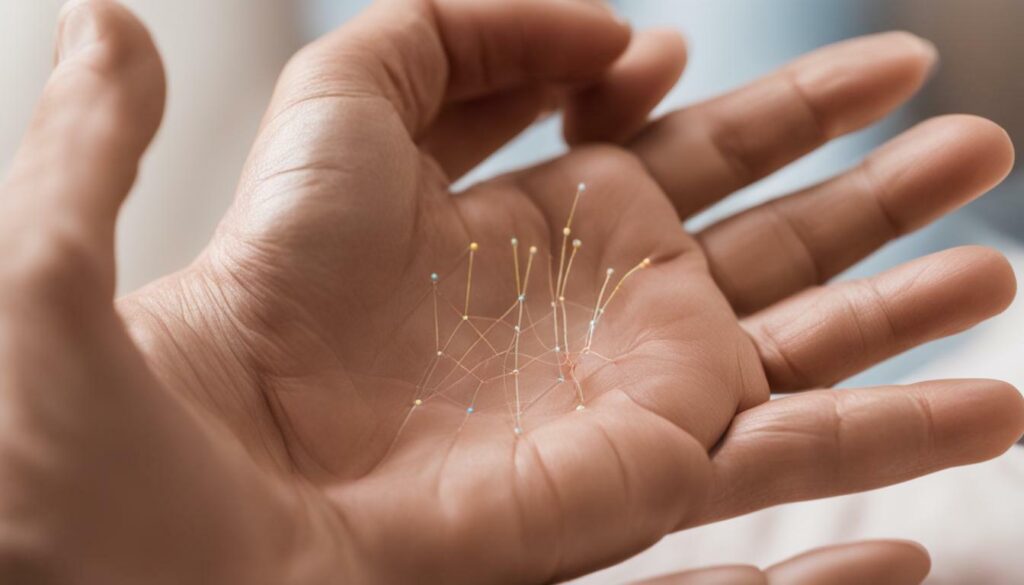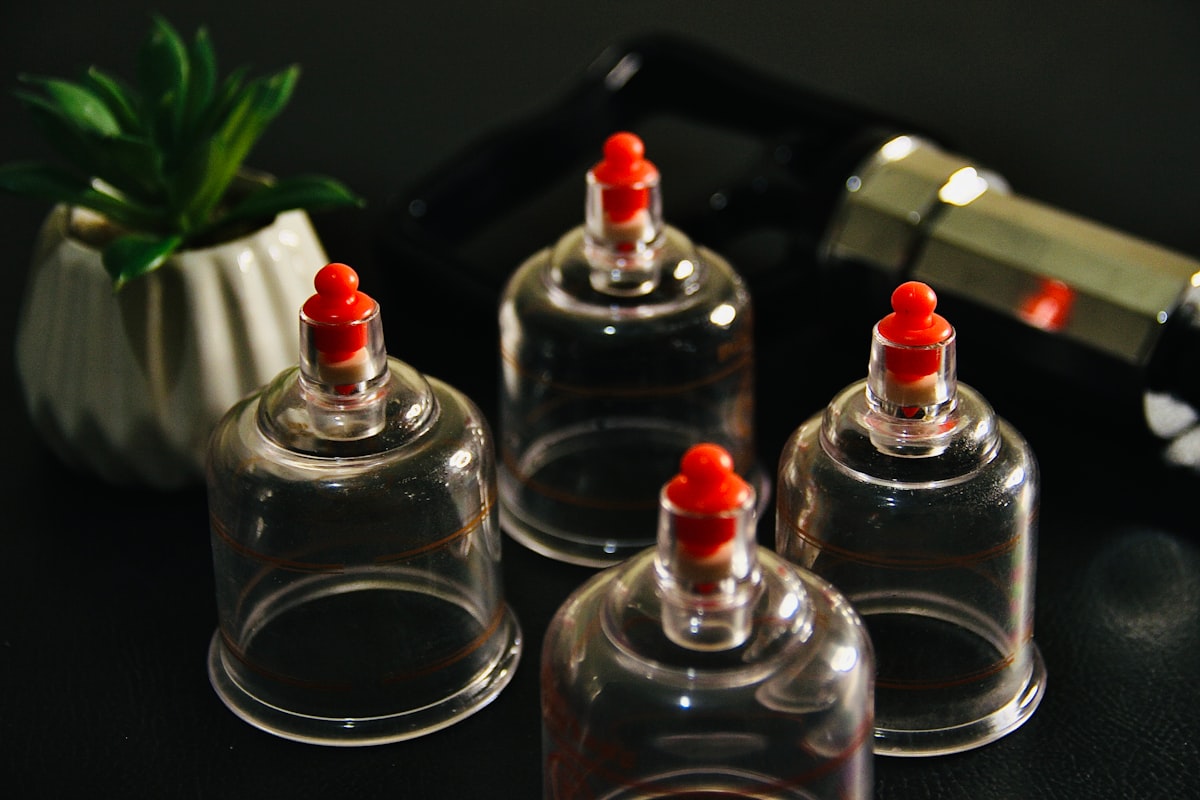
Cupping therapy is an ancient Chinese practice that has been used for centuries to promote healing and well-being. It involves placing cups on the skin and creating a vacuum, which draws the skin and underlying tissue into the cup. This technique is believed to stimulate the flow of blood and energy throughout the body, which can help reduce tension, promote relaxation, and improve overall health. While cupping therapy is not a substitute for professional medical care, there is evidence to suggest that it may be effective in reducing symptoms of anxiety.
Key Takeaways
- Cupping therapy is an ancient Chinese practice that involves creating a vacuum on the skin to stimulate blood and energy flow throughout the body.
- Research suggests that cupping therapy may be effective in reducing symptoms of anxiety.
- Cupping therapy may also be effective in reducing physical symptoms associated with anxiety, such as muscle tension and headaches.
- Cupping therapy is a non-invasive and drug-free treatment option, making it an attractive option for those who prefer a natural alternative to traditional treatments.
- It is important to work with a qualified practitioner when considering cupping therapy for anxiety reduction.
- While more research is needed, cupping therapy has the potential to become a valuable tool in managing anxiety.
Understanding Anxiety and Its Impact
Anxiety is a common mental health condition that can have a significant impact on a person’s daily life. It is characterized by feelings of nervousness, tension, and fear, and can manifest as a range of physical symptoms such as muscle tension, headaches, and difficulty sleeping. Anxiety can be a debilitating condition that affects many aspects of a person’s life, including their work, relationships, and overall quality of life.
There are many different treatments available for anxiety, including medication and therapy. However, some people may turn to alternative therapies like cupping therapy to help manage their symptoms. Cupping therapy is an ancient Chinese practice that involves placing cups on the skin and creating a vacuum, which draws the skin and underlying tissue into the cup. This technique is believed to stimulate the flow of blood and energy throughout the body, which can help reduce tension, promote relaxation, and improve overall health.
While cupping therapy should not be used as a substitute for professional medical care, there is evidence to suggest that it may be effective in reducing symptoms of anxiety. A study published in the Journal of Alternative and Complementary Medicine found that cupping therapy was effective in reducing symptoms of anxiety in patients. The participants who received actual cupping therapy experienced a significant reduction in anxiety symptoms compared to those who received a sham treatment. This suggests that cupping therapy may be a useful tool in managing symptoms of anxiety.
In addition to reducing symptoms of anxiety, cupping therapy may also be effective in reducing physical symptoms associated with anxiety such as muscle tension and headaches. By improving circulation and relaxing the muscles, cupping therapy can help relieve pain and tension in the body.
One of the advantages of cupping therapy is that it is a non-invasive and drug-free treatment option. It does not involve the use of medications or surgery, making it an attractive option for those who prefer a natural alternative to traditional treatments. However, it is important to note that cupping therapy should not be used as a standalone treatment for severe anxiety or other mental health conditions. It should be used as a complementary therapy alongside other treatments prescribed by a healthcare professional.
Working with a qualified practitioner is important when considering cupping therapy for anxiety reduction. A qualified practitioner can provide guidance on how to incorporate cupping therapy into a comprehensive treatment plan and ensure safe and effective application of the technique.
While more research is needed to fully understand the benefits of cupping therapy for anxiety reduction, the available evidence suggests that it may be a useful tool in promoting relaxation and reducing anxiety symptoms. With further research, cupping therapy may become a valuable tool in the fight against anxiety.
The Effectiveness of Cupping Therapy for Anxiety Reduction
A 2017 study published in the Journal of Alternative and Complementary Medicine found that cupping therapy was effective in reducing symptoms of anxiety in patients. The study involved 60 participants with anxiety who were randomly assigned to receive either traditional cupping therapy or a sham treatment.
The participants who received actual cupping therapy experienced a significant reduction in anxiety symptoms compared to those who received the sham treatment. This suggests that cupping therapy may be a useful tool in managing symptoms of anxiety.
In addition to reducing symptoms of anxiety, cupping therapy may also be effective in reducing physical symptoms associated with anxiety, such as muscle tension and headaches. By improving circulation and relaxing the muscles, cupping therapy can help relieve pain and tension in the body.
One of the advantages of cupping therapy is that it is a non-invasive and drug-free treatment option. It does not involve the use of medications or surgery, making it an attractive option for those who prefer a natural alternative to traditional treatments. However, it is important to note that cupping therapy should not be used as a standalone treatment for severe anxiety or other mental health conditions. It should be used as a complementary therapy alongside other treatments prescribed by a healthcare professional.
It is also important to work with a qualified practitioner when considering cupping therapy for anxiety reduction. A qualified practitioner can provide guidance on how to incorporate cupping therapy into a comprehensive treatment plan and ensure safe and effective application of the technique.
While cupping therapy shows promise in reducing symptoms of anxiety, more research is needed to fully understand its benefits. However, the available evidence suggests that it may be a useful tool in promoting relaxation and reducing anxiety symptoms.
Cupping Therapy for Physical Symptoms Associated with Anxiety
In addition to reducing symptoms of anxiety, cupping therapy may also be effective in reducing physical symptoms associated with anxiety, such as muscle tension and headaches. This is because cupping therapy helps to improve circulation and relax the muscles, which can provide relief from pain and tension in the body.
During a cupping therapy session, cups are placed on the skin and a vacuum is created to draw the skin and underlying tissue into the cup. This technique is believed to stimulate the flow of blood and energy throughout the body, which can help to promote relaxation and reduce tension in the muscles.
Research has shown that cupping therapy can be effective in reducing muscle pain and tension. A 2015 study published in the Journal of Traditional and Complementary Medicine found that patients who received cupping therapy for neck pain reported significant reductions in pain intensity and disability compared to those who received conventional therapy.
Similarly, a 2016 study published in Evidence-Based Complementary and Alternative Medicine found that cupping therapy was effective in reducing both the frequency and intensity of tension headaches in patients.
While cupping therapy may be effective in reducing physical symptoms associated with anxiety, it should be used as a complementary therapy alongside other treatments prescribed by a healthcare professional. It is important to work with a qualified practitioner to ensure safe and effective application of the technique.
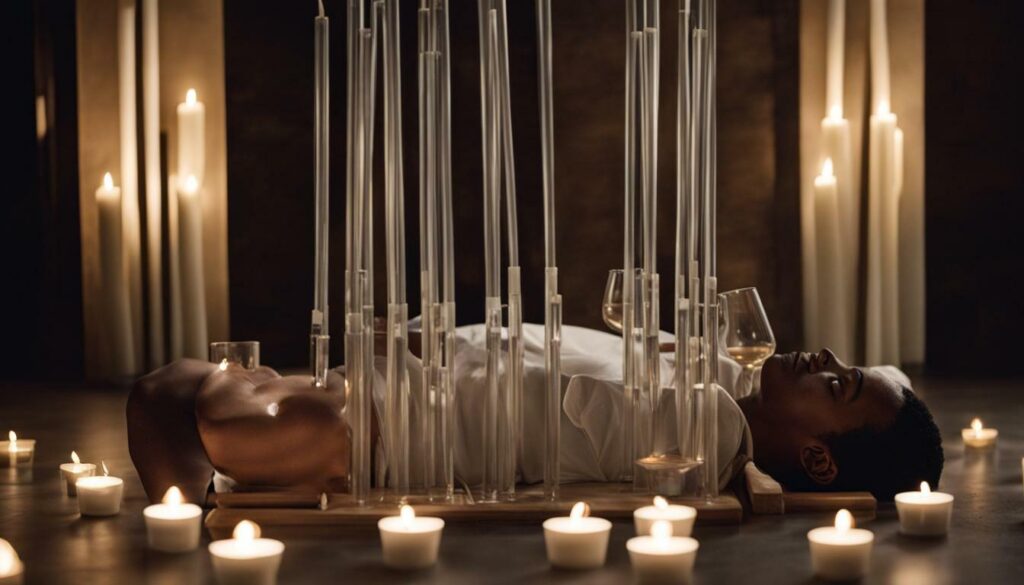
Non-Invasive and Drug-Free Treatment Option
One of the advantages of cupping therapy is that it is a non-invasive and drug-free treatment option. It does not involve the use of medications or surgery, making it an attractive option for those who prefer a natural alternative to traditional treatments. Cupping therapy can promote relaxation and reduce tension in the body, which can help alleviate anxiety symptoms.
Unlike medications or surgery, cupping therapy does not come with the risk of side effects or complications. It is a gentle and safe treatment that can be used alongside other therapies to promote overall health and well-being.
Many people find cupping therapy to be a relaxing and rejuvenating experience. The cups create a gentle suction on the skin, which can help release tension and promote relaxation. This can be especially beneficial for those who experience physical symptoms like muscle tension and headaches in addition to anxiety symptoms.
It is important to note that cupping therapy should never be used as a replacement for professional medical care. It should be used as a complementary therapy alongside other treatments prescribed by a healthcare professional. A qualified practitioner can provide guidance on how to incorporate cupping therapy into a comprehensive treatment plan and ensure safe and effective application of the technique.
Overall, cupping therapy is a promising natural alternative for those seeking relief from anxiety symptoms. With further research, it may become a valuable tool in the fight against anxiety and other mental health conditions.
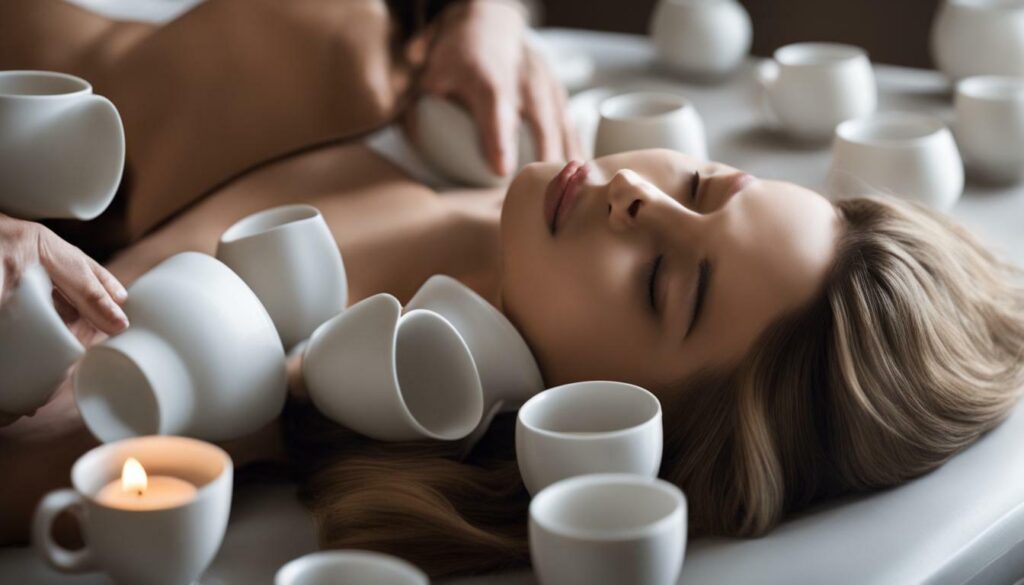
Integrating Cupping Therapy into a Treatment Plan
It is also important to work with a qualified practitioner when considering cupping therapy for anxiety reduction. A qualified practitioner can offer guidance on how to include cupping therapy in a comprehensive treatment plan. They can also ensure the safe and effective application of the technique, taking into account an individual’s unique needs and medical history.
Cupping therapy can be used as a complementary therapy alongside other treatments for anxiety, such as medication and therapy. It can help relieve physical symptoms like muscle tension and headaches, while promoting relaxation and reducing anxiety symptoms. However, it should not be used as a standalone treatment for severe anxiety or other mental health conditions.
If you’re considering cupping therapy for anxiety relief, it’s important to find a qualified practitioner who can guide you through the process. They can answer any questions you have about the technique, and help you develop a treatment plan that works for you. By working together, you can ensure safe and effective use of cupping therapy to manage symptoms of anxiety.

The Effectiveness of Cupping Therapy for Anxiety Reduction
While cupping therapy shows promise in reducing symptoms of anxiety, more research is needed to fully understand its benefits. However, a 2017 study published in the Journal of Alternative and Complementary Medicine found that cupping therapy was effective in reducing symptoms of anxiety in patients. The study involved 60 participants with anxiety who were randomly assigned to receive either traditional cupping therapy or a sham treatment. The participants who received actual cupping therapy experienced a significant reduction in anxiety symptoms compared to those who received the sham treatment. This suggests that cupping therapy may be a useful tool in managing symptoms of anxiety.
In addition to reducing symptoms of anxiety, cupping therapy may also be effective in reducing physical symptoms associated with anxiety, such as muscle tension and headaches. By improving circulation and relaxing the muscles, cupping therapy can help relieve pain and tension in the body.
One of the advantages of cupping therapy is that it is a non-invasive and drug-free treatment option. It does not involve the use of medications or surgery, making it an attractive option for those who prefer a natural alternative to traditional treatments. However, it is important to note that cupping therapy should not be used as a standalone treatment for severe anxiety or other mental health conditions. It should be used as a complementary therapy alongside other treatments prescribed by a healthcare professional.
It is also important to work with a qualified practitioner when considering cupping therapy for anxiety reduction. A qualified practitioner can provide guidance on how to incorporate cupping therapy into a comprehensive treatment plan and ensure safe and effective application of the technique.
While cupping therapy shows promise in reducing symptoms of anxiety, more research is needed to fully understand its benefits. However, the available evidence suggests that it may be a useful tool in promoting relaxation and reducing anxiety symptoms.
Conclusion
In conclusion, cupping therapy is an ancient practice that has the potential to be a beneficial tool in managing anxiety. By promoting relaxation, reducing tension, and improving circulation, cupping therapy may be effective in reducing symptoms of anxiety and physical symptoms associated with anxiety, such as muscle tension and headaches.
While cupping therapy should not be used as a substitute for professional medical care, it may be used as a complementary therapy alongside other treatments prescribed by a healthcare professional. It is important to work with a qualified practitioner to ensure safe and effective application of the technique.
With further research, cupping therapy may become a valuable tool in the fight against anxiety.
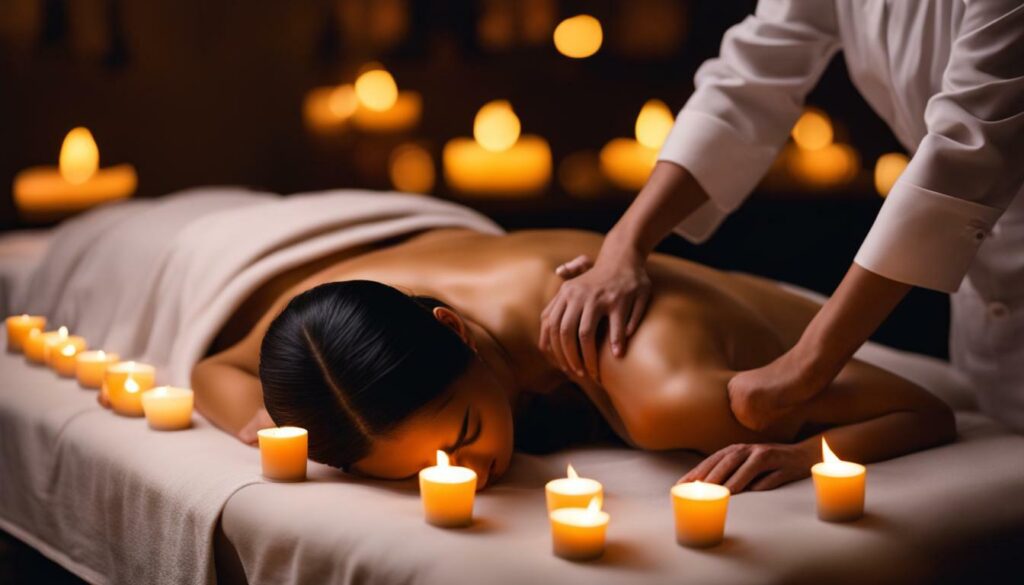
At our clinic, we offer cupping therapy as a complementary therapy for anxiety reduction. Our qualified practitioners can assess your needs and create a comprehensive treatment plan that incorporates cupping therapy and other treatments to help manage your anxiety symptoms.
If you are considering cupping therapy for anxiety relief, we encourage you to seek professional guidance and work with a qualified practitioner. With the right guidance and treatment plan, cupping therapy may be a useful tool in promoting relaxation and reducing symptoms of anxiety.
Seeking Professional Guidance
It is important to work with a qualified practitioner to ensure safe and effective application of cupping therapy for anxiety treatment. A trained practitioner can help determine if cupping therapy is a suitable treatment option for an individual’s specific needs and provide guidance on how to incorporate it into a comprehensive treatment plan.
While cupping therapy is generally safe, it is essential to work with a qualified practitioner to avoid any potential risks or complications. Cupping therapy should not be performed on certain areas of the body, such as the abdomen or lower back, and should be avoided by individuals with certain health conditions, such as skin allergies or blood disorders.
A qualified practitioner can also provide guidance on how often cupping therapy should be performed and monitor progress to ensure that the therapy is effective in reducing symptoms of anxiety. By working with a trained practitioner, individuals can safely incorporate cupping therapy into their anxiety management plan and potentially experience the benefits of this ancient practice.

Exploring Alternative Therapies
While traditional treatments for anxiety, such as medication and therapy, may be effective for some individuals, others may benefit from alternative therapies like cupping therapy. Cupping therapy is a non-invasive and drug-free treatment option that involves placing cups on the skin and creating a vacuum, which can help reduce tension and promote relaxation.
It is important to note that cupping therapy should not be used as a substitute for professional medical care. While it may be effective in reducing symptoms of anxiety, it should be used as a complementary therapy alongside other treatments prescribed by a healthcare professional.
Working with a qualified practitioner is essential when considering cupping therapy for anxiety management. They can provide guidance on how to incorporate cupping therapy into a comprehensive treatment plan and ensure safe and effective application of the technique.
In addition to cupping therapy, there are other alternative therapies that may be beneficial in managing anxiety, such as acupuncture, meditation, and yoga. These therapies can help reduce stress and tension, promote relaxation, and improve overall well-being.
Ultimately, the choice of which therapies to use in managing anxiety will depend on the individual’s preferences and needs. It is important to work with a healthcare professional to determine the best approach for managing anxiety and to ensure safe and effective use of any therapies.

Caption: Cupping therapy is a natural alternative to traditional treatments for anxiety
The Potential of Cupping Therapy
With further research, cupping therapy may become a valuable tool in the fight against anxiety. This ancient Chinese practice has been used for centuries to promote healing and well-being by stimulating the flow of blood and energy throughout the body. While cupping therapy should not be used as a standalone treatment for severe anxiety or other mental health conditions, it may be effective in reducing symptoms of anxiety when used as a complementary therapy alongside other treatments.
A non-invasive and drug-free treatment option, cupping therapy is attractive to those who prefer a natural approach to managing their symptoms. It may also be effective in reducing physical symptoms associated with anxiety, such as muscle tension and headaches.
It is important to work with a qualified practitioner when considering cupping therapy for anxiety reduction. A qualified practitioner can provide guidance on how to incorporate cupping therapy into a comprehensive treatment plan and ensure safe and effective application of the technique.
While more research is needed to fully understand the benefits of cupping therapy for anxiety reduction, the available evidence suggests that it may be a useful tool in promoting relaxation and reducing anxiety symptoms. With further research, cupping therapy may become a valuable tool in the fight against anxiety.
FAQ
Q: What is cupping therapy?
A: Cupping therapy is an ancient Chinese practice that involves placing cups on the skin and creating a vacuum, which stimulates the flow of blood and energy throughout the body.
Q: How does cupping therapy help reduce anxiety?
A: Cupping therapy is believed to reduce anxiety by promoting relaxation, improving circulation, and relieving physical symptoms associated with anxiety, such as muscle tension and headaches.
Q: Can cupping therapy be used as a standalone treatment for anxiety?
A: Cupping therapy should not be used as a standalone treatment for severe anxiety or other mental health conditions. It should be used as a complementary therapy alongside other treatments prescribed by a healthcare professional.
Q: Is cupping therapy a non-invasive treatment option for anxiety?
A: Yes, cupping therapy is a non-invasive and drug-free treatment option for anxiety. It does not involve the use of medications or surgery.
Q: Should I seek professional guidance when considering cupping therapy for anxiety?
A: Yes, it is important to work with a qualified practitioner when considering cupping therapy for anxiety reduction. A qualified practitioner can provide guidance on how to incorporate cupping therapy into a comprehensive treatment plan and ensure safe and effective application of the technique.
Q: Is cupping therapy effective in reducing symptoms of anxiety?
A: The available evidence suggests that cupping therapy may be effective in reducing symptoms of anxiety when used as a complementary therapy alongside other treatments. However, more research is needed to fully understand its benefits.
Q: What are the potential benefits of cupping therapy for anxiety?
A: Cupping therapy has the potential to promote relaxation, reduce anxiety symptoms, alleviate physical symptoms associated with anxiety, and provide a non-invasive and drug-free treatment option.
Q: Can cupping therapy be used as a natural alternative to traditional treatments for anxiety?
A: Yes, cupping therapy can be used as a natural alternative to traditional treatments for anxiety. It is a non-invasive and drug-free option that may provide relief from anxiety symptoms.
Q: How can cupping therapy be integrated into a treatment plan for anxiety?
A: Cupping therapy should be integrated into a comprehensive treatment plan for anxiety, alongside other treatments prescribed by a healthcare professional. Working with a qualified practitioner is important to ensure safe and effective application of the technique.
Q: Is cupping therapy suitable for everyone with anxiety?
A: Cupping therapy may be suitable for some individuals with anxiety, but it is important to consult with a healthcare professional and work with a qualified practitioner to determine if it is appropriate for your specific needs.
Q: Does cupping therapy require any special equipment?
A: Cupping therapy requires specialized cups that create a vacuum when placed on the skin. These cups can be made from various materials, such as glass, silicone, or bamboo.



